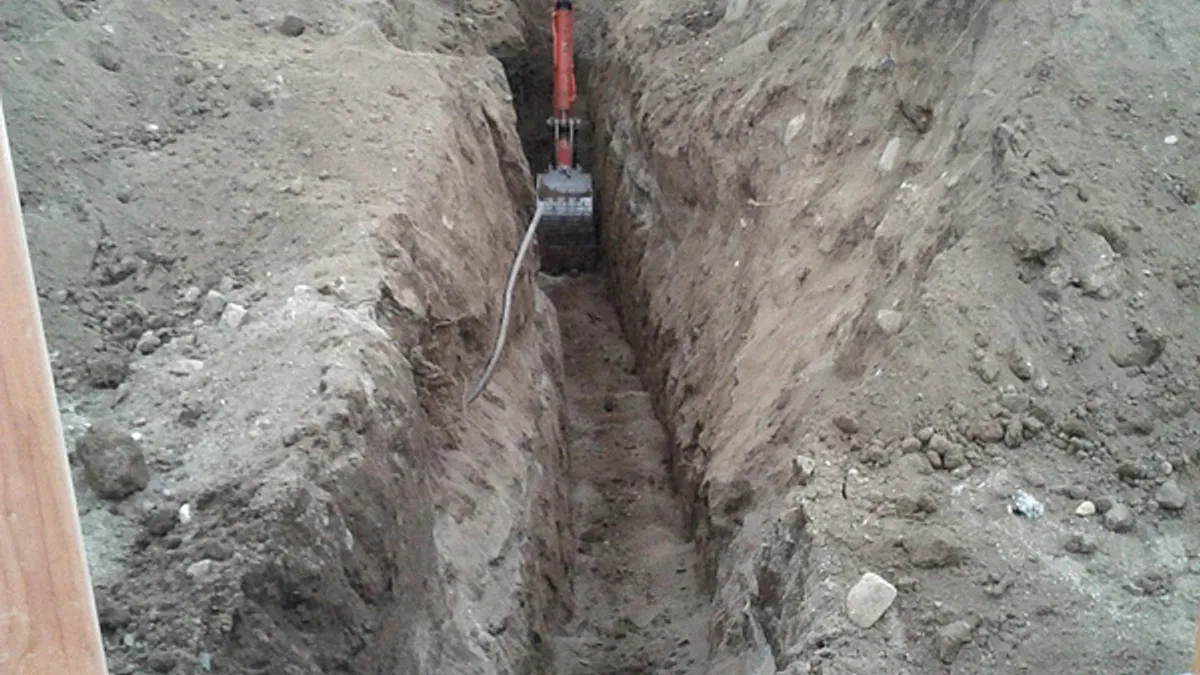Dive Brief:
- The U.S. Department of Labor has made reducing excavation and trenching hazards a priority, with the goal of reducing the total by 10% by Sept. 30, 2019 from the fiscal year 2017 total.
- The department said it would achieve this goal through OSHA inspections and by offering compliance assistance. OSHA also plans to issue public service announcements promoting the National Utility Contractors Association's Trench Safety Stand Down June 18 to 23, as well as revise its national emphasis program, update online safety resources and work with organizations and companies in an effort to reduce fatalities, according to SUN News Report.
- Excavation and trenching operations are among the most dangerous in the construction industry because of the risk of flooding in the trench and because just one cubic yard of dirt can weigh as much as a car. The Bureau of Labor Statistics reported that the number of excavation and trench fatalities in 2016 was near twice the average of the previous five years combined.
Dive Insight:—
In addition to compliance assistance and inspections, OSHA is issuing citations and levy sizable fines against contractors that expose their employees to trench and excavation hazards.
In one of the agency's most recent actions, it cited a Jacksonville, Florida, utility contractor for two trench-related violations — one serious and one willful — after an employee was injured in a collapse. OSHA proposed a fine of almost $272,000 for Jax Utilities Management Inc. after an agency inspector determined that the company exposed employees to struck-by and caught-in hazards. The inspector also found that Jax allowed employees to work without cave-in protection and let water collect in the trench, which was one of the contributing factors to the collapse.
Struck-by and caught-in/caught-between hazards have been at the forefront of safety news for months. In August, the Center for Construction Research and Training reported that more than 800 U.S. construction workers died in struck-by incidents from 2011 to 2015, a figure that represents a rate not seen in any other industry.
In addition, the center recently issued a report about caught-in/between incidents. It said that between 2011 and 2015, these types of injuries increased 33%, which is more than the uptick of 26% for construction accidents in general. Almost 67% of those who died were caught or crushed in a material collapse.











